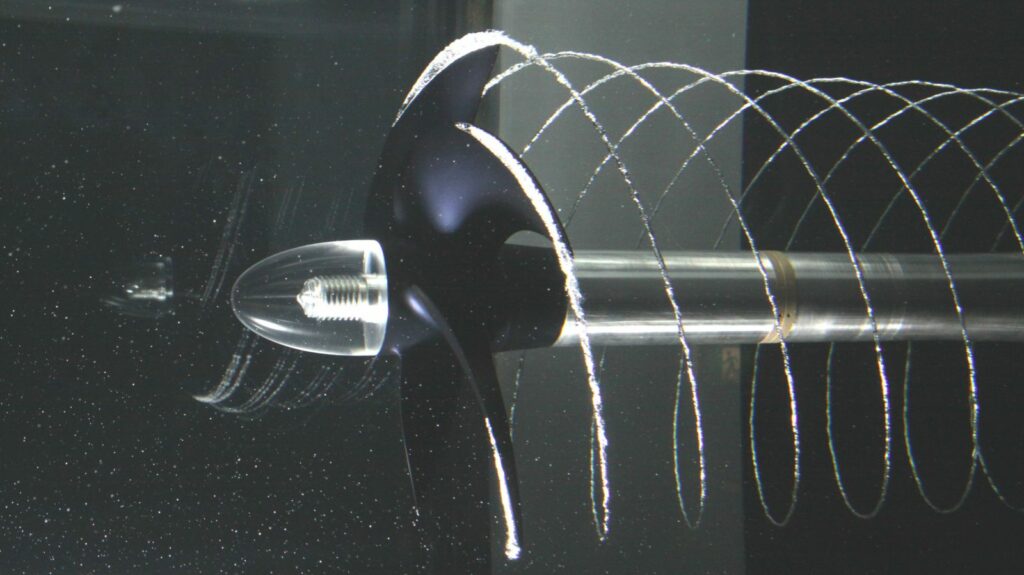Cavitation is caused when a local pressure in a liquid drops below its vapor pressure, which causes the liquid to vaporize and bubble. In the instance of the boat prop, which creates areas of low pressures along the blades of the propeller, cavitation can lead to destructive beauty as the repeated collapse of vapor bubbles against the metal surface deteriorate it over time. This natural demonstration of extreme forces at play: rapid pressure changes, energy transfer, and balance of liquid forces to name a few sure do create a visually stunning example of the complexity of fluid mechanics.
This photograph comes from a study performed by DLBA Naval Architects and is put together by Donald L. Blount and David L. Fox and is studying the design considerations for Propellers in a cavitating environment.

5 Comments. Leave new
First Prize
First Prize
I’ve always found it particularly mesmerizing when fluids behave in a way that doesn’t seem possible. The spiral shape reminds me of something I would’ve tried to create when I was a kid with the bathtub faucet.
Third prize
It is a fascinating picture and a great choice of demonstrating flow vis and how the bubbles flow rapidly behind the propellor
Third Prize: Aside from being a visually fascinating image, the phenomenon of cavitation is an interesting one. It is interesting to see how consistently the bubbles trail behind the propeller and I think there is potential here from an artistic perspective.
Third Prize
I like how this photo highlights the helical patterns behind the propeller. This flow is much more organized than I would have expected for a wake flow, and the bubble trails do a good job of showing that.